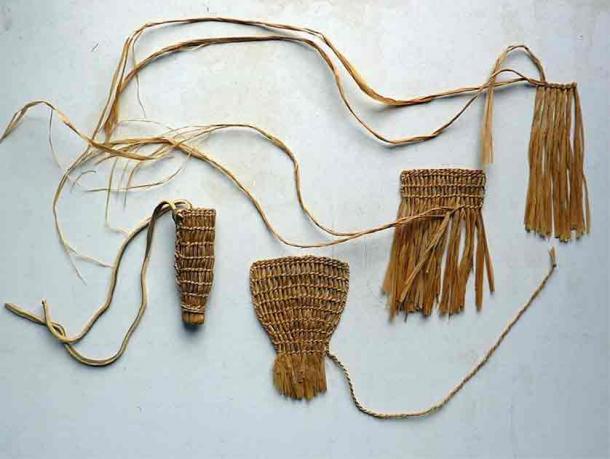
Does Ötzi the Iceman Have History’s Oldest Hand-Poked Tattoos?
Over five millennia have passed since Ötzi the Iceman was struck down by an arrow from an unknown assailant in the frigid northern regions of the Alps. But still the ancient frozen body has secrets to reveal.
Now researchers in Tennessee claim to have unraveled the enigma surrounding Ötzi’s magnificent tattoos: they suggest that Ötzi likely crafted them himself, employing a technique called “hand poking” wherein a sharp handheld tool repeatedly pierces the skin.
For the purposes of this research, published in The European Journal of Archaeology, one of the scholars involved went so far as to tattoo himself using various ancient methods. He hoped this would help determine which technique yielded markings most like those found on the Iceman.
The Oldest Hand-Poked Tattoos?
Ötzi's body bears some of the earliest known evidence of tattooing in human history. The ancient male adorned himself with a total of 61 tattoos, comprising 19 groups of black lines, typically less than an inch (2.5 cm) in length.
- 5,300-Year-Old Otzi the Iceman Yields Oldest Known Human Blood
- Six Amazing Ancient Tattoo Discoveries

This “hand poking” technique, resulting in a distinctive pattern, is believed to have been used by Ötzi to apply his tattoos (Deter-Wolf et al., Exarc, 2022)
However the tattoos themselves have always been mysterious. Despite decades of scholarly inquiry, the method by which Ötzi's tattoos were made has been a subject of great scrutiny, and we perhaps have answers now.
Conventional wisdom has often described Ötzi's tattoos as being produced through the “incision technique” which involves cutting the skin before applying plant-based pigments. Researchers at the Tennessee Division of Archaeology (TDOA) have now cast doubt on this hypothesis, proposing that Ötzi likely utilized a “hand-poking” method instead. In this approach, a sharp implement is dipped in tattoo ink and then meticulously dotted into the skin, creating the desired design.
"One early discussion of the Iceman's marks proposed that they weren't traditional tattoos, but instead places where plant matter had been packed into incised wounds and then set on fire," archaeologist Aaron Deter-Wolf of the Tennessee Division of Archaeology told ScienceAlert. "There's absolutely no proof of that, and over time the bit about fire got left behind, but the idea of their being incised persisted. Most of the archaeologists who have discussed Ötzi's tattoos in recent years are upfront that we don't know how they were made - but the idea still appears in just about every popular media discussion.”
Deter-Wolf also suggested that the prevailing notion of cutting with stone tools is the earliest form of tattooing, reflecting a common perception, though there is no explicit archaeological evidence to prove or disprove this idea.
Self-Experimentation, the Oldest Scientific Method
Deter-Wolf collaborated with tattoo artist Danny Riday of Temple Tattoo in New Zealand to delve deeper into Ötzi's tattooing process. Employing four distinct techniques, they replicated Ötzi's tattoos on Riday's leg, allowing them to heal before comparing them to the ancient originals.
- Was Otzi the Iceman a Victim of Human Sacrifice? (Video)
- The Female Siberian Ice Maiden Whose Legend Lives On

The treasure trove of artifacts discovered with Ötzi have been invaluable in offering insight into the life of the mummy, 5,300 years ago (Anne Reichert / CC BY-SA 4.0)
While the incision technique typically yields clean, straight edges from the blade, the hand-poking method results in smaller, overlapping circles or irregular shapes. The team discovered that the incisions on Ötzi closely resembled the latter, indicating they were likely made with a shaped bone or copper awl (a small pointed tool).
Deter-Wolf noted that similar artifacts have been uncovered in the archaeological record of the Ötzi Alps, where the mummified body was found. Although none have been definitively identified as tattooing tools, this new study may prompt archaeologists to reconsider their potential use, reports The Daily Mail.
Otzi: A Figure of Great Mystique
Ötzi's frozen body was discovered alongside his clothing, gear, and traces of plants and fungi preserved on his clothing and in his gut. 5,300-years-ago, high in the Italian Alps, Ötzi the iceman met his demise when he was shot in the back with an arrow, likely succumbing to his injuries within minutes. Collapsing onto the ice, his body was preserved until its discovery in 1991, making him Europe's oldest mummy.
Since then, Ötzi has remained a subject of mystery and intrigue, with ongoing research attempting to uncover the circumstances of his death. Recent revelations include the determination that Ötzi had dark skin, dark eyes, and a balding head, contrary to previous assumptions of fair hairiness.
Scientists have traced Ötzi's ancestry back to early farmers who migrated from Anatolia. In 2018, a study of his remains concluded that a fatal blow from an arrow severed a nerve in Ötzi's shoulder and struck his major vessels, leading to his death.
Top image: Reconstruction of Ötzi the Iceman, flanked by the tattoo experiment which is believed to replicate how the originals were created. Source: Deter-Wolf et al., Exarc, 2022; Mannivu / CC BY-SA 4.0.
By Sahir Pandey
References
Chadwick, J. 2024. Unravelling the mystery of the world's oldest tattoos: Ötzi the iceman applied his own ink using a hand-poking technique 5,300 years ago, study finds. Available at: https://www.dailymail.co.uk/sciencetech/article-13200635/Otzi-icemans-tattoo-ink-hand-poking.html
Deter-Wolf, A., et al. 2024. Chalcolithic Tattooing: Historical and Experimental Evaluation of the Tyrolean Iceman's Body Markings. European Journal of Archaeology. Available at: https://doi:10.1017/eaa.2024.5
Starr, M. 2024. Artist Tattooed Himself to Solve Mystery of Ötzi The Iceman's Tattoos. Available at: https://www.sciencealert.com/artist-tattooed-himself-to-solve-mystery-of-tzi-the-icemans-tattoos
Taub, B. 2024. Ötzi The Iceman's Tattoos Recreated On Living Skin To Discover How They Were Made. Available at: https://www.iflscience.com/otzi-the-icemans-tattoos-recreated-on-living-skin-to-discover-how-they-were-made-73407















